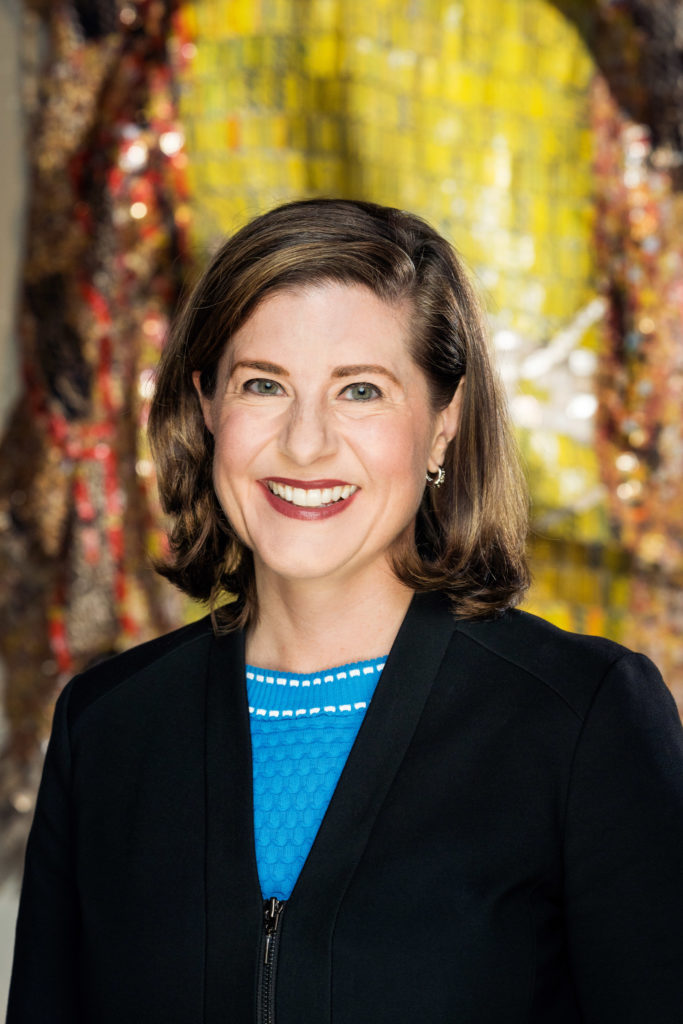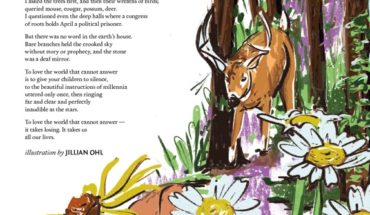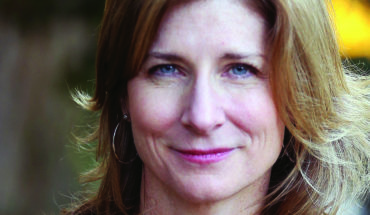With a focus on art history and a love of curating, Hillings made her way from the Guggenheim to the NCMA.
As told to Ayn-Monique Klahre
This September, WALTER will host its annual WINnovation summit, which focuses on women in leadership roles. One of our speakers will be Valerie Hillings, who’s now in her fourth year as director and CEO of the North Carolina Museum of Art. Hillings spent over a decade at the Guggenheim working on various projects, which gave her opportunities to lead a variety of projects early in her career. Here, she talks about her path toward directing the NCMA.
Did you always plan to work at an art museum?
Yes, I knew I wanted a career in the arts from the time I was an undergraduate at Duke University. I’d been a double major in art history and political science up until senior year. Then I got lucky and was chosen to co-curate a show at the Duke University Museum of Art. I loved doing that so much that I decided to go to graduate school for art history. I loved the idea of curating — how do you tell a visual story on a wall, versus just writing about it — and I particularly loved contemporary art, working with living artists. I was convinced I would be a curator or professor, though my grad school friends often said, you’re going to be a museum director someday.
How did you start on that path?
Well, internships are always the way to pop your foot in the door and gain experience, getting a sense of what one really enjoys and what one might not want to pursue as a career. The summer between undergrad and grad school, I was living at home in DC, and I got an internship at the National Gallery of Art. It was not like my internships in other areas, where afterwards I knew I didn’t want to work there or in that field. I’d had political internships, and I felt like it wasn’t the right path for me.
Between coursework and my dissertation, I took some time off and taught at NYU first as a preceptor, then as an adjunct professor. At the same time, I had an internship at the Metropolitan Museum of Art. I loved pursuing academic and museum work at the same time. And I realized that I liked elements of both — but also that I could do both. Also, I had been a research assistant to Professor Kristine Stiles in undergrad and got a taste of what a focus on scholarly research entailed — each of these were different ways to try out a career.
When did you focus in on being a museum director?
It’s funny, at some point I was invited back to Duke to talk about my career and all these students were talking about how they wanted to pursue careers in the art market. But in my generation, you didn’t think about working in the arts for profit. This experience at Duke provided an opportunity to reflect upon and talk about how there are so many ways to be involved in the arts — you can work at a museum, you can work at an auction house, you can be an art critic, etc. Within any given industry, there are different paths.
When I first started looking for jobs after finishing my PhD, I had to learn to interview because having gone straight into graduate school, I lacked experience in telling my story.
After an extended job search post-PhD, I ended up at the Guggenheim, and was there for 14 years. I was comfortable being a spokesperson for the institution, but this meant that I focused much less on telling my own professional story for a long time. Now that I interview people myself, I tell them to think about how you tell your story, to master the art of the sound bite or elevator pitch and to read your interviewer — always do your homework but be ready to be responsive in the moment.
When I started looking for museum director jobs, I decided to pursue opportunities at university museums. I found that during some interviews, the professors had concerns about my being a “museum person” and not academic enough, whereas board members saw that as a plus. That surprised me, but it showed me that even within a given field, there are different perspectives that factor into such selections and sometimes, you look back at some particular job you didn’t get, where you thought you were such a good candidate, and later you learn about the place and think, wow, that’s an incredible bullet I dodged! Things happen the way they’re supposed to, though you can certainly have a hand in it.
You were at the Guggenheim for 14 years, how did your role change while you were there?
I was lucky, in that the Guggenheim has so many different museums and global projects, so it was like I worked at multiple institutions and places. For example, when you’re curating a traveling show, you’re embedded with the staff at those locations around the world, so you feel like you become part of their team. Those 14 years went by quickly, and I had tremendous responsibility from the outset. I had the opportunity to do and learn so many things, and it was never boring. But I was getting to the point where I knew it was time to make a change.
Did it feel like a big change to be the director of a state museum?
I am fortunate to have grown up in a family where my parents stressed that I could do whatever I wanted to do in life, and throughout my career, I have worked for professors, curators, and museum directors who gave me the opportunity to learn, grow, and lead. So when I decided it was time to pursue a museum director job, I felt ready to take on a new challenge that would allow me to draw on all of my life and professional experiences. That I could return to a state and community that had such meaning to me as I took on the role of director was thrilling. I am honored to be able to continue my work in the arts while also playing a part in making culture and creativity accessible to North Carolinians.
This interview has been lightly edited and condensed for clarity.
This article was originally published on waltermagazine.com on August 8, 2022.





